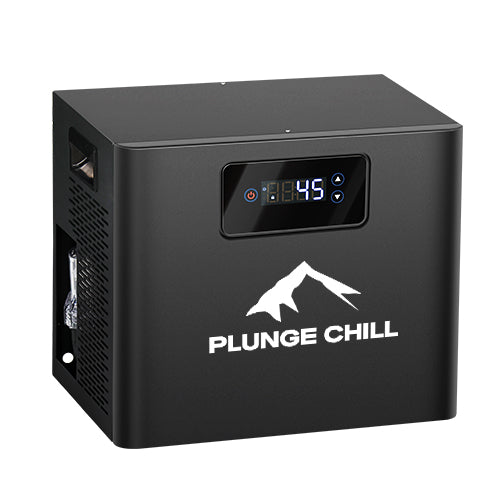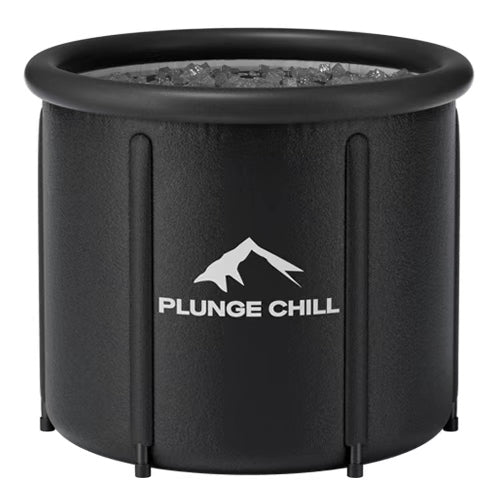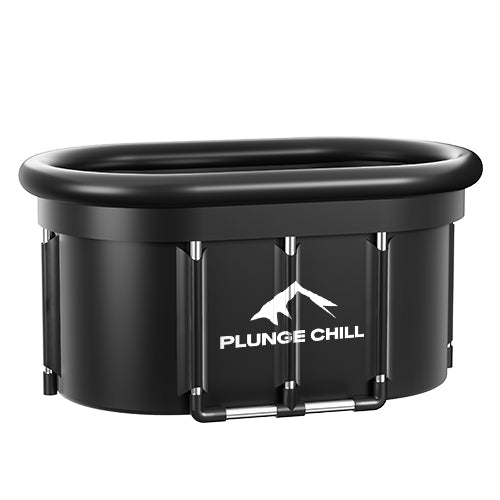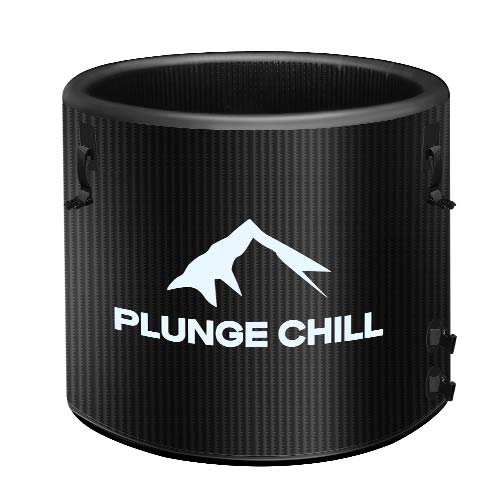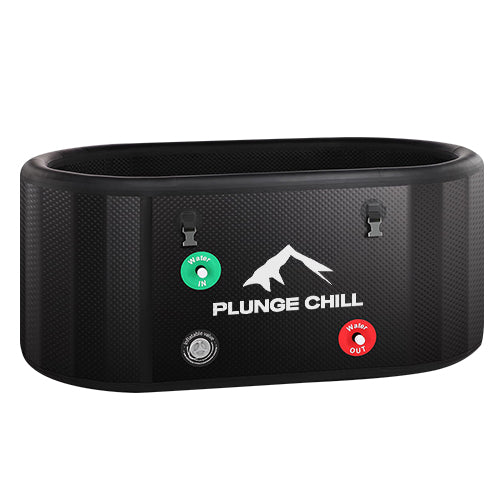As a sports rehabilitation specialist and strength coach who reviews cold plunge products and sets up recovery rooms, I’ve learned that clear, correctly balanced water is non-negotiable. Hygiene protects skin and eyes, reduces infection risk in shared spaces, preserves equipment, and, importantly, sustains the therapeutic feel of a plunge at 39–55°F. This guide distills best practices from aquatic facility standards and credible industry sources, and applies them to home and studio plunges in practical terms you can implement today.
Why Clean Cold‑Plunge Water Matters
Cold immersion is hard on organisms and easy on reactions. That paradox defines water care. Low temperatures slow microbial growth, which is good, but they also slow the chemistry that kills microbes, which is why you still need a persistent, measurable disinfectant in the water. Public health and pool-operator guidance consistently warns that residual-free systems invite biofilm, opportunistic bacteria, and protozoa that are indifferent to a crisp temperature. Evidence briefings for health inspectors underscore that cold water reduces disinfectant reaction rates and efficacy, while letting pathogens survive longer, even when growth rates are suppressed (National Collaborating Centre for Environmental Health). Professional operator training adds that algae can still grow at about 50°F, and that combined organics will accumulate if you do not maintain turnover, filtration, and sanitizer (Aquatic Facility Training and Consultants).
In clinical and team settings, I also see cold shock and slip hazards increase when maintenance slips. Clean water improves visibility, which reduces near-misses in short, timed immersions. It also reduces skin and follicle flare-ups—often a sign of Pseudomonas or imbalanced chemistry—before they derail an athlete’s week. Bottom line: cold is not a substitute for sanitation, and good sanitation complements the recovery experience you’re after.
The Fundamentals: Terms and Target Ranges
Everyone who manages a plunge should be fluent in a few terms. pH expresses acidity; total alkalinity buffers pH; calcium hardness governs corrosive versus scale-forming water; free chlorine or bromine is your kill residual; total dissolved solids indicate water age; combined chlorine indicates chloramine byproducts that cause odor and eye sting; turnover and micron rating define your circulation and filter performance. These parameters are well-established in pool/spa standards, and they adapt well to plunges. Most home tubs are 80–150 gallons, and the water is cold, which shifts how quickly chemistry moves but not the targets themselves.
Parameter |
Practical Definition |
Typical Home Target |
Notes/Sources |
pH |
Acidity level affecting comfort and sanitizer efficacy |
7.2–7.8 |
Broad consensus across operator training and codes; Master Spas video guidance favors 7.2–7.6 (Master Spas; Aquatic Facility Training and Consultants). |
Total Alkalinity (TA) |
pH buffer/stability |
80–120 ppm |
Operator training targets support this buffer; adjust first in workflow (Aquatic Facility Training and Consultants; Icebound Essentials). |
Calcium Hardness (CH) |
Corrosion/scale balance |
200–400 ppm for plaster; 150–250 ppm often acceptable for acrylic/plastic |
Utah code requires ≥200 ppm; some home guides cite 100–250 ppm for non-plaster shells. Choose higher ends for metal heat exchangers (Utah Administrative Code; Icebound Essentials; Coldture Wellness). |
Free Chlorine |
Primary disinfectant residual |
1–3 ppm |
Widely recommended for safe, clear water; keep combined chlorine ≤0.5 ppm with shock or water exchange (Master Spas; Utah Administrative Code). |
Bromine |
Alternative disinfectant residual |
3–5 ppm |
Often preferred by some home users for odor stability; empirical support in cold is limited. Verify with side-by-side residual/ORP logs at 50°F. |
Hydrogen Peroxide (H₂O₂) |
Oxidizer used as sanitizer in some home setups |
30–50 ppm when used with robust UV/ozone |
Works best as part of an advanced system with continuous oxidation; many codes require chlorine/bromine residuals in recirculating systems (Icebound Essentials; NCCEHC; CDC MAHC). |
Cyanuric Acid (CYA) |
Chlorine stabilizer |
10–50 ppm if used |
Not typically needed indoors; keep within code if used; avoid high CYA which slows chlorine action (Utah Administrative Code). |
TDS |
Water “age” indicator |
<1,500 ppm typical operator guidance |
Drain/refill when TDS climbs; high TDS weakens sanitizer performance (Aquatic Facility Training and Consultants). |
Turnover/Circulation |
Full-volume filtration time |
At or under 60 minutes in commercial; ensure robust daily circulation at home |
Cold plunge volumes are small; design to avoid dead zones (NCCEHC; Aquatic Facility Training and Consultants). |
Filter Micron Rating |
Particle size capture |
5–20 microns for clarity |
Typical 20‑micron plunge filters do not remove protozoa like Cryptosporidium; sub‑micron or secondary barriers are required for protozoan risk mitigation (NCCEHC). |
Ranges differ slightly among sources because codes address public pools with plaster surfaces, while home plunges often use plastics or stainless steel. The safest approach is to adopt pool-grade ranges and then consult your tub’s manual for surface-specific guidance.

Disinfection Options Compared
Chlorine is the most ubiquitous residual because it is measurable, affordable, and compatible with UV and ozone. For home plunges, 1–3 ppm with pH around 7.4–7.6 is straightforward and effective; if combined chlorine exceeds 0.5 ppm, perform breakpoint chlorination or partially drain and refill, as public codes advise (Utah Administrative Code). In rehab clinics, chlorine’s predictability simplifies handoffs between staff, provided test kits are fresh and records are kept.
Bromine provides an alternative with a softer odor profile. Some home-oriented guides describe bromine as more stable in cold water; while I see fewer odor complaints with bromine tablets in small indoor tubs, the comparative stability claim lacks strong cold‑specific data. A practical test is to run parallel logs of sanitizer residual and oxidation‑reduction potential at 50°F for a week in identical conditions to document drift.
Hydrogen peroxide appears in wellness communities as a chlorine-free route, often at 30–50 ppm targets when combined with ozone. In my experience, H₂O₂ alone struggles to maintain a bathtub-resistant residual through variable bather loads, especially if hygiene is inconsistent. Health guidance also cautions that ultraviolet plus hydrogen peroxide, without chlorine or bromine, is not an acceptable primary system in many public contexts (CDC Model Aquatic Health Code as cited by the National Collaborating Centre for Environmental Health). If you choose H₂O₂ for a home plunge, pair it with robust continuous oxidation, commit to frequent testing, and understand that many jurisdictions do not recognize it as a primary residual for recirculating vessels.
Ozone and UV are powerful secondary systems that inactivate microbes and oxidize organics, decrease byproducts, and can extend water life. They do not replace a measurable residual in most standards; think of them as a performance amplifier for chlorine or bromine. Integrated chillers with ozone can reduce overall chemical demand, but you still need to test and adjust a primary residual. Where UV is installed, maintain lamp sleeves and replace bulbs on schedule for consistent dose delivery (Aquatic Facility Training and Consultants).
Filtration and Circulation
Moving water is clean water, especially in a compact tub where contaminants concentrate quickly. Daily circulation that achieves tight flow through the filter bolsters clarity and sanitizer mixing. For small home plunges, running the pump for several hours each day often achieves many turnovers because the volume is modest; the target in commercial settings is a full turnover within an hour, and adopting that design goal prevents cold spots and dead zones (Aquatic Facility Training and Consultants; NCCEHC).
Filter performance hinges on both the micron rating and maintenance. A 20‑micron cartridge improves clarity but does not remove protozoan cysts, which are roughly 1–5 microns; that’s why operator guidance stresses that filtration alone is insufficient for pathogen control and insists on a residual disinfectant. Clean filters regularly to prevent bypass and channeling: rinse weekly in heavier use and soak monthly in a compatible cleaner before rinsing and drying, then reassemble. Replace cartridges when pleats deform or fabric loses integrity (Icebound Essentials; Coldture Wellness).

Chemistry Balancing Workflow
Effective balancing follows a simple sequence that keeps adjustments from chasing each other. Set total alkalinity first so pH will hold, fine‑tune pH next into the 7.2–7.8 range, then address calcium hardness to position water between corrosive and scale-forming, and finally set your sanitizer level. In cold water, chemicals dissolve more slowly; dose conservatively, allow 20–30 minutes of circulation between steps with the cover off, and retest before moving on (Icebound Essentials). Several vendors advise dosing in very small increments—half‑teaspoon additions for small residential tubs—to avoid overshooting; that matches my own practice in sub‑150‑gallon units (Master Spas).
Shock is your periodic reset when you run chlorine. If odor or eye sting emerges, or if combined chlorine rises above 0.5 ppm, perform breakpoint chlorination based on the combined chlorine measurement, or drain and refill if water is already “old” with high TDS (Utah Administrative Code). Peroxide‑based systems address oxidation by maintaining target peroxide levels and leveraging their ozone/UV stage; regardless of approach, always test before and after each addition.
Maintenance Cadence That Works
Think in layers instead of checklists. Before each plunge, a quick rinse shower and a clean‑feet routine cut body oils and grit dramatically, which lowers sanitizer demand and biofilm risk. After the session, skim visible debris and put the lid on promptly to block dust, leaves, and insects. Those simple bookends are the most underappreciated water savers I see across teams and clinics (SisuPlunges; Coldture Wellness).
Weekly, test pH and your chosen sanitizer, rinse the filter if bather load is high, and wipe the waterline with a compatible, non‑abrasive cleaner. In chlorine systems, shock when odor appears or combined chlorine rises. In peroxide systems, retune to the 30–50 ppm range and monitor oxidation capacity. With UV and ozone, keep up with the manufacturer’s lamp and cell maintenance schedule so the system’s kill power remains consistent (Aquatic Facility Training and Consultants; Icebound Essentials).
As for water replacement, a practical baseline for home plunges is every two to four weeks, with earlier changes if you notice cloudiness, slippery walls, or persistent odor. Some brands report that high‑efficiency 20‑micron filters and antiseptic media can stretch change intervals toward about forty‑five days; consider those figures product claims until your own logs confirm them. A straightforward verification step is to chart clarity, smell, and residual levels twice per week and compare outcomes over one full interval (Coldture Wellness).
Hygiene and Biofilm Control
Hygiene rules keep water from becoming a mixing bowl. Request pre‑use showers and clean swimwear, and exclude anyone with open wounds or gastrointestinal illness. In facilities, place a mat at the entry, and consider a foot rinse station. Biofilm begins where flow is slow, so scrub corners and seams during deep cleans. Operator training emphasizes that UV sleeves need cleaning and that components like pumps, seals, and chillers deserve inspection because cold hardens gaskets and can invite leaks (Aquatic Facility Training and Consultants; NCCEHC).
One overlooked insight is that many home plunge filters are marketed on clarity rather than risk; typical 20‑micron cartridges simply do not remove protozoa such as Cryptosporidium. That gap matters more when multiple users share a tub. A residual disinfectant and disciplined hygiene are your true barriers; sub‑micron filtration and validated secondary disinfection add further resilience in busier settings (National Collaborating Centre for Environmental Health).
Special Considerations at 39–50°F
Cold extends the life of a sanitizer residual but slows its microbe kill. You do not usually need to raise chlorine above normal pool guidance; you need to wait long enough for contact time and keep the residual steady. Chemicals dissolve more slowly, so undissolved granules can sink; pre‑dissolve where appropriate, add in small increments, and circulate longer between tests. Algae growth is slower in the cold, but not absent at about 50°F, particularly with light exposure and nitrates present (Aquatic Facility Training and Consultants). If you’re outdoors, a fitted cover reduces both contamination and temperature drift, which eases the workload on the chiller and stabilizes chemistry.

Troubleshooting: Clarity, Odor, Itch
Cloudiness often reflects inadequate filtration or insufficient circulation. Confirm the pump is moving water briskly without dead zones, rinse or replace the filter, and check pH and sanitizer. Odor and eye sting point to chloramines or poorly oxidized organics; shock or partially drain and refill, and verify pH is in range. Itchy skin can arise from high sanitizer, low pH, or opportunistic bacteria in neglected corners; retest, rebalance, scrub seams, and re‑establish a steady residual. A pattern of rapid sanitizer loss usually indicates a high organic load from hygiene issues; tighten pre‑use rinse habits and add a skimming routine after each session (Master Spas; Aquatic Facility Training and Consultants; Academia community microbiology study background).
Buying Tips for Cleaner Water
If you are selecting a plunge for a home gym or small clinic, prioritize systems that make water‑care tasks simple and effective. Look for integrated filtration with serviceable cartridges and published micron ratings, ozone or UV as a secondary stage alongside a compatible primary sanitizer, a chiller and pump sized to turn over the tub quickly, and a drain that encourages complete emptying during deep cleans. A well‑fitting insulated cover, a high‑quality test kit with reagents that are in date, and clear access to pumps and filters for routine maintenance are must-haves. For chlorine users, ensure the manufacturer provides guidance on compatible cleaners and shock products. If you strongly prefer a chlorine‑free experience, aim for an engineered ozone‑forward system and be prepared for more frequent testing and water changes, because home peroxide programs place more responsibility on the operator (Garage Gym Reviews; NCCEHC; Icebound Essentials).
Two areas where sources diverge deserve a brief explanation. First, some home guides promote peroxide or “natural” cleaners like vinegar and Epsom salt as primary solutions, while public health guidance favors chlorine or bromine residuals for recirculating vessels. The difference stems from definitions and risk tolerance: codes address multi‑bather public risk with validated, measurable residuals; home blogs often describe single‑user setups with lower loads. If you operate in a shared environment, align with pool/spa standards. Second, reported water‑change intervals vary from two weeks to well over a month. The spread likely reflects different filtration quality, bather loads, and marketing claims. Your own logs—clarity, odor, sanitizer stability, and TDS trend—should drive the decision for your tub.

Quick Workflow You Can Trust
In my programs, the sequence that consistently works is simple. Plan circulation that actually moves the full volume, keep your filter clean, and train users to rinse before entry. Balance TA, pH, and CH before setting a sanitizer residual, then verify with a good test kit. Use UV or ozone as a supporting actor, not a substitute. Inspect seals and hoses during every deep clean, and record results so you can see patterns before they become problems. If you’re comparing products, choose the unit that makes this workflow easier to execute, not the one that promises you’ll never need chemicals again.
Takeaway
Cold water does not clean itself; it only slows everything down. Build a simple, repeatable routine around circulation, filtration, balanced chemistry, and user hygiene, and support it with a measurable disinfectant. Anchor your targets to pool‑operator standards, then tune them to your specific tub’s materials and load. If you add UV or ozone, keep a residual. If you choose peroxide for a home setup, pair it with continuous oxidation and frequent testing, and recognize that public codes may not accept it as a stand‑alone approach. Your reward is the thing we all want in recovery: consistently crisp water that feels good on the skin, protects athletes, and lets you focus on training—not troubleshooting.
Frequently Asked Questions
How often should I change my cold‑plunge water? In most home settings, every two to four weeks balances effort and quality. Change sooner if water turns cloudy, smells off, or walls feel slimy. Some brands report longer intervals with high‑efficiency filters; treat those as starting points and let your logs confirm or correct them.
What should my pH and sanitizer be? Keep pH between 7.2 and 7.8, and maintain a measurable residual such as free chlorine at 1–3 ppm or bromine at 3–5 ppm. If you use chlorine, keep combined chlorine at or below 0.5 ppm by shocking or exchanging water as needed. These ranges reflect mainstream pool/spa standards adapted to cold plunges.
Is bromine better than chlorine in cold water? Bromine feels gentler to some users and is less odorous, but evidence that it is categorically more stable in the cold is limited. If you are curious, run a short comparison: track residuals and ORP at 50°F with identical loads for a week and choose the sanitizer that maintains a steady residual with fewer adjustments in your specific tub.
Can I run hydrogen peroxide only to avoid chlorine? Hydrogen peroxide can be effective in tightly run home setups, especially when paired with ozone, but many public health frameworks require chlorine or bromine residuals in recirculating vessels. If you go peroxide, test frequently, hold 30–50 ppm, and be prepared to change water more often. For shared tubs, align with standards that mandate a chlorine or bromine residual.
Do I need UV or ozone? UV and ozone are excellent secondary systems that inactivate microbes and oxidize contaminants, reducing byproducts and helping your primary sanitizer. They do not replace the need for a measurable residual in most standards. Maintain UV sleeves and bulbs, and ensure ozone generators are sized and installed per the manufacturer.
What filtration should I look for? Aim for 5–20‑micron mechanical filtration for clarity and easy service. Recognize that 20‑micron filters do not capture protozoa like Cryptosporidium; that gap reinforces why a steady disinfectant residual and strong hygiene are essential, especially with multiple users.
A Note on Sources
This guide synthesizes operator training and code concepts with practical home guidance. Core chemistry and operations ranges are drawn from Aquatic Facility Training and Consultants and Utah Administrative Code. Public health considerations and system limitations reference the National Collaborating Centre for Environmental Health and CDC MAHC. Practical home workflows and dosing nuance are informed by Master Spas, Icebound Essentials, SisuPlunges, Coldture Wellness, and Garage Gym Reviews. Where home marketing claims extend maintenance intervals or promote residual‑free systems, I have labeled the confidence level and suggested verification steps so you can validate what works in your tub and context.
References
- https://www.academia.edu/10550648/Microbiological_and_Physicochemical_Characteristics_of_Swimming_Pool_Water_in_Owerri_Imo_State_Nigeria
- https://objects.lib.uidaho.edu/iwdl/iwdl-199902.pdf
- https://www.law.cornell.edu/regulations/nebraska/178-Neb-Admin-Code-ch-2-SS-005
- https://pmc.ncbi.nlm.nih.gov/articles/PMC10088029/
- https://www.k-state.edu/doddslab/epubs/journalarts/buck%20et%20al.pdf
- https://people.wou.edu/~taylors/g407/restoration/WA_Dept_Forestory_2004_Chap4_Restoration_Strategy.pdf
- https://www.canr.msu.edu/ipm/uploads/files/trainingmanuals_swimmingpool/swimmingpool_wholemanual.pdf
- https://www.noaa.gov/sites/default/files/legacy/document/2020/Oct/07354626732.pdf
- https://ctstormwatermanual-nemo.media.uconn.edu/wp-content/uploads/sites/2584/2018/10/SWQM_Design_GuidanceSmall.pdf
- https://cybercemetery.unt.edu/archive/oilspill/20130218180203/http://www.nwd-wc.usace.army.mil/tmt/wq/studies/wq_plan/wq200814.pdf
